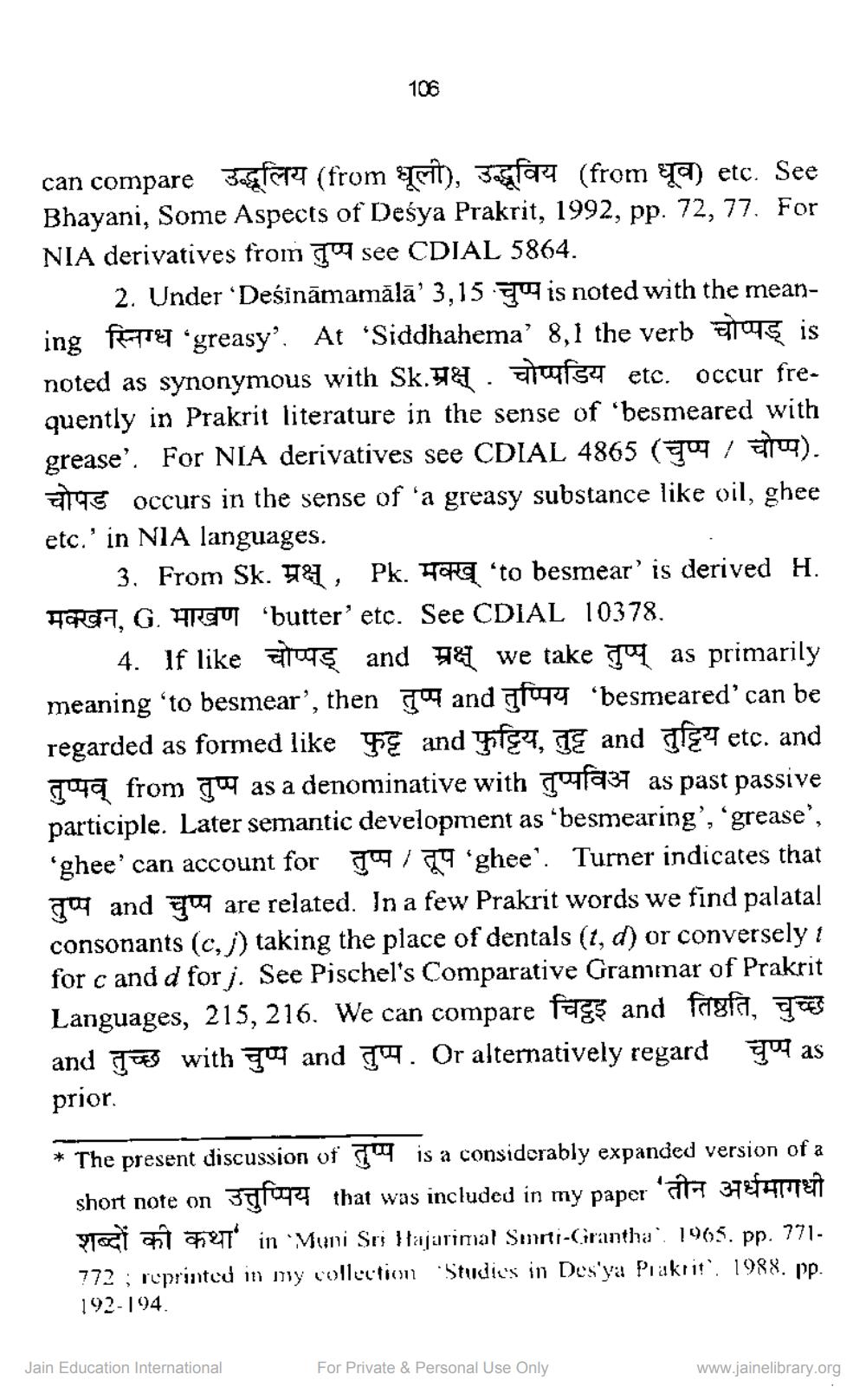Book Title: Notes on Some Prakrit Words Author(s): H C Bhayani Publisher: ZZ_Anusandhan View full book textPage 2
________________ 106 can compare उद्धूलिय (from धूली), उद्धृविय (from धूव) etc. See Bhayani, Some Aspects of Deśya Prakrit, 1992, pp. 72, 77. For NIA derivatives from 19 see CDIAL 5864. 2. Under 'Deśināmamālā' 3,15 g is noted with the meaning FETTET 'greasy'. At 'Siddhahema' 8,1 the verb 214qç is noted as synonymous with Sk. 991. guise etc. occur frequently in Prakrit literature in the sense of 'besmeared with grease'. For NIA derivatives see CDIAL 4865 (709 / 21109). 214€ occurs in the sense of a greasy substance like oil, ghee etc.' in NIA languages. 3. From Sk. 94, Pk. Hal to besmear' is derived H. CH, G. GU 'butter' etc. See CDIAL 10378. 4. If like altugę and we take ng as primarily meaning “to besmear', then 504 and afuqy 'besmeared' can be regarded as formed like फुट्ट and फुट्टिय, तुट्ट and तुट्टिय etc. and तुप्पव् from तुप्प as a denominative with तुप्पविअ as past passive participle. Later semantic development as 'besmearing', 'grease', 'ghee can account for 194 / 99 'ghee'. Turner indicates that go and q are related. In a few Prakrit words we find palatal consonants (c, j) taking the place of dentals (t, d) or conversely 1 for cand d forj. See Pischel's Comparative Grammar of Prakrit Languages, 215, 216. We can compare चिट्ठइ and तिष्ठति, चुच्छ and तुच्छ with चुप्प and तुप्प . Or alternatively regard चुप्प as prior. * The present discussion of 79 is a considerably expanded version of a short note on उत्तुप्पिय that was included in my paper 'तीन अर्धमागधी tai 8T in Muni Sri Hajarimal Sunni-Girantha'. 1905. pp. 771772 ; reprinted in my collection Studies in Des'ya Prakrit'. 1988. pp. 192-194. Jain Education International For Private & Personal Use Only www.jainelibrary.orgPage Navigation
1 2 3 4 5
